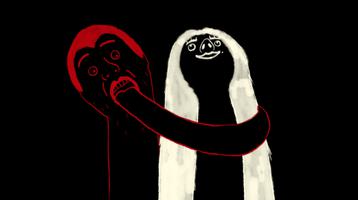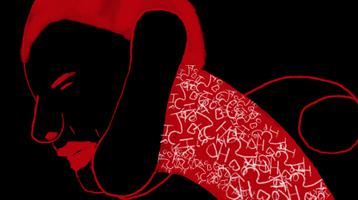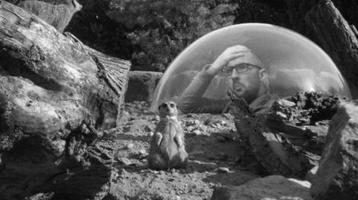News Story
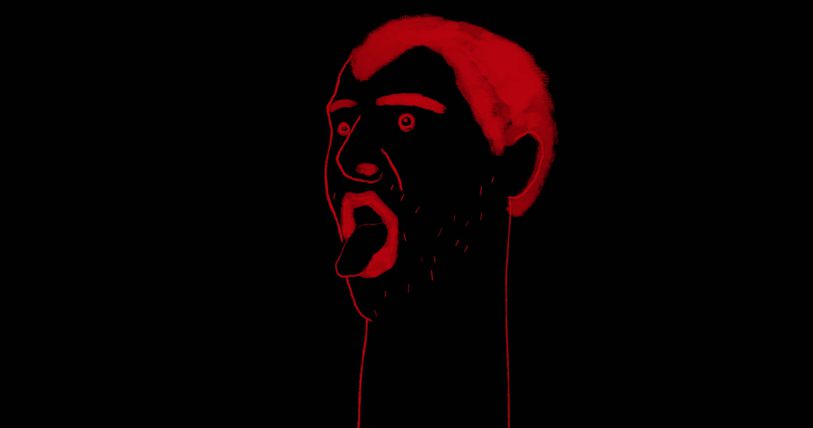
Neck and Neck (2016), still, Shaun Clark
BAFTA nominated filmmaker, animation director and FLAMIN alumnus Shaun Clark participated in Film London's Still Shakespeare, a project celebrating 400 years of Shakespeare with a series of experimental animation commissions, inspired by original research by Sally Barnden and produced in partnership with the London Shakespeare Centre at King's College London and animation companies Film Club at Th1ng and Sherbet.
Inspired by Shakespeare's Othello, Neck and Neck is a dark and surreal digital animation depicting the relationship between the deceived Othello, the innocent Desdemona and the mendacious Iago, focusing on the neck and its varied symbolism.
Five years on and Neck and Neck is still receiving critical acclaim. We sat down with the filmmaker to discuss the project's journey, support available for aspiring animators and ones to watch in the industry.
Tell us about the process behind making Neck and Neck
The film is part of the Still Shakespeare project inspired by original research by Sally Barnden. Neck and Neck explores Shakespeare’s story of Othello. At the start of the project I spent time researching the play looking for a way to re-imagine the piece. I felt a common theme within the play was the use of the body and in particular the neck that was part of the strangulation scene and a place for love. The neck has a sense of fragility and I decided I wanted to explore this area within the film. The script was written relatively quickly once the idea had been developed and from there I began to put mood boards together of what the film would look like and also the atmosphere and tension I would like to create.
Before animating I shot a number of live action video references to help visualise and create a form of dance between Othello and Desdemonia. I used these references when drawing the film.
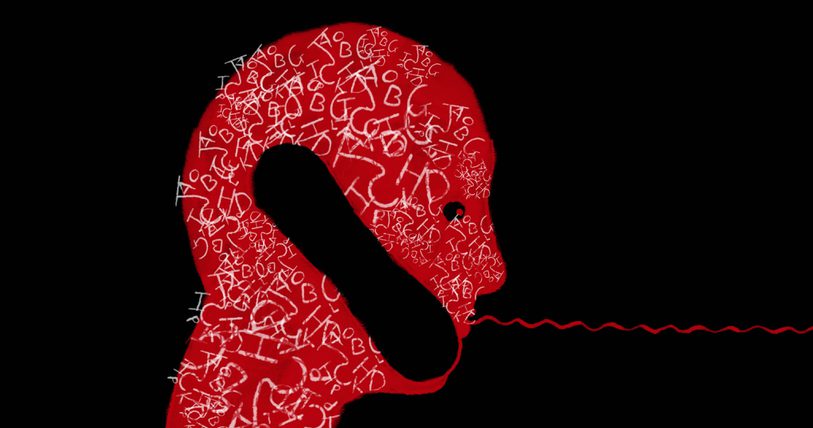
Neck and Neck (2016), still, Shaun Clark
The animation was created using a graphic tablet called a cintiq, which enabled me to draw each image into Adobe Photoshop, and using the timeline window in this program the animation was created.
The animated shots where then exported from Photoshop and composited using Adobe After Effects. From After Effects the finished shots where imported into Adobe Premiere and edited by Michael Ho.
Whilst editing with Michael I had gathered a number of musical temp scores, which I had been listening to whilst animating, and they held the type of energy and emotion I wanted the audience to experience. We used the temp tracks to cut to whilst the composer Alexandra Harwood was scoring the film and David Pringle was creating the sound. Once the edit was locked I worked closely with Alex and David on the soundtrack for the film to interweave the use of sound with music. Voices where recorded from Melvyn Ternan and Kim Noce and we sound mixed the film afterwards.
Neck and Neck has been widely screened and critically acclaimed - what has been most rewarding about its reception?
The film has been screened at over 80 film festivals around the world reaching a diverse audience through film festivals, exhibitions and being aired on TV. Sharing the story with such a wide range of people has been incredibly rewarding experience. Winning a British Animation Award was also a highlight to the films success.
Presenting your film is always special and the festivals in particular give filmmakers a platform too not only share their film but often also talk about the process and ideas behind the development of the piece.

Shaun Clark at the 2018 British Animation Awards
How did you get involved with Still Shakespeare? What is its legacy?
I was working at the animation company th1ng as a represented director when producer Sue Loughlin approached me about the Still Shakespeare brief. The project was such a good opportunity to work with Shakespeare’s text and be involved with the celebrations. We then went to a presentation of Sally Barnden’s research and heard more about the project and how she wanted to work with the filmmakers.
The legacy was also a big draw, as I knew working with Shakespeare’s Othello would hopefully give the film more of a life beyond the two-year festival run, which is the life short films tend to have.
Neck and Neck was inspired by Shakespeare's Othello. Have you been influenced by the playwright before/since and who else influences your work?
I have always enjoyed Shakespeare’s work and created a number of animated sequences for the stage. In 2009 I worked on All’s Well That Ends Well at the National Theatre directed by Marianne Elliott and in 2011 Richard III at the Old Vic directed by Sam Mendes. Both productions took Shakespeare’s work and explored them in quite inventive ways without losing the heart of the play and characters. Neck and Neck followed these shows.

The Beholder, still, Shaun Clark
I have not revisited Shakespeare’s work. However in 2020 I made a film called The Beholder that was inspired by another celebrated writer – Edgar Allan Poe. I chose to explore the Tell Tale Heart and in particular, the start of the story and how the protagonist tries to justify his reasons for attacking the Old Man.
What have you been up to since Neck and Neck and what have you got coming up?
Last year I made two films, the first called The Beholder, which I mentioned earlier, and a second film called Angry Dogs about the absurdity of anger. Both of these films are currently on the film festival circuit.
Now I am currently working with editor Ariadna Fatjo-Vilas on a film called Wish You Were Here, which uses a single continuous shot to take a nosey at the goings on at a beach. The film features lamas, marriage proposals, missiles and ballet dancers in a real concoction of absurdity.
In March I am shooting a film called In The Beginning written by Chris Lincé and made with BEEE Creative and Arts Council England. The film will feature dancers and be a mixture of pixilation and hand drawn animation based on the Royston tapestry. In between these projects is a feature film, which is currently in development.

Angry Dogs, still, Shaun Clark
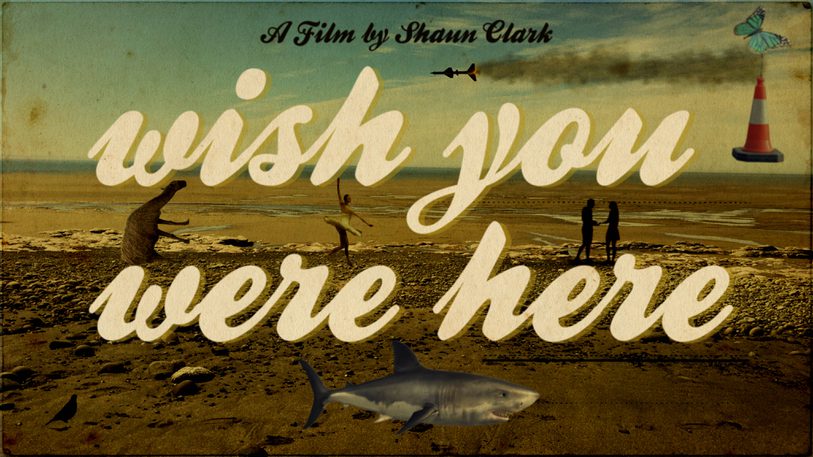
wish you were here, still, Shaun Clark
What does the independent animation scene currently look like to you? Have there been any changes and what do you think the future holds?
The independent animation scene is thriving in the UK with plenty of bold and inventive approaches towards creating animated film. More and more people can now get hold of technology to enable them to make films and animated content and this is fuelling a wide variety of stories and we are seeing many independent voices now more than ever.
With the help of the BFI and other organisations who are now financially supporting animated film there is going to be a new wave of UK animated films being shared worldwide.
What support is out there for artist animators and what advice have you found most valuable?
The BFI and Animate Projects have recently announced new support schemes over the last year. Arts Council England also has support through two general art-funding schemes.
The new shift towards online talks has brought about a number of webinars recently from BAFTA and the BFI showcasing filmmakers and crew talking about their craft and approach which is a really useful resource for budding and established filmmakers. In addition most of the animation festivals have moved online making screenings and masterclasses more accessible to people.

Neck and Neck (2016), still, Shaun Clark
Who excites you in animation right now?
Many people are producing exciting work to many to name but here are a few; Theodore Ushev, Joanna Quinn, Martina Scarpelli, Anna Mantzaris, Daria Kashcheeva, Siqi Song, Haemin Ko and Phil Mulloy.
Find out more about Neck and Neck by watching the official trailer and heading to the official website
Follow Shaun Clark on social media - Instagram, Twitter and Facebook
